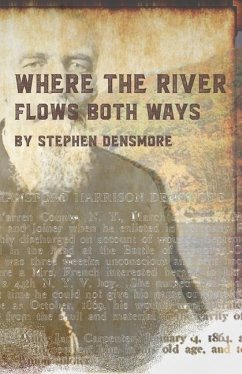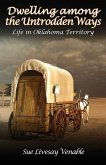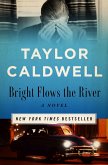Where the River Flows Both Ways traces a young carpenter's actual journey out of a tiny, insulated Adirondack mill town and down the Hudson River, where his eyes are opened to burgeoning Industrial Age cities, cultural curiosities, and significant historical events along the way. Long before they fight, the protagonist and an endearing collection of mates drill incessantly throughout the winter of 1861-62 at Camp Butterfield in northern Virginia, play the evolving game of baseball, and even participate in an epic snowball fight with another regiment. By the time they engage Confederate soldiers on the battlefield at Hanover Court House as part of the Union's failed Peninsula Campaign, the men of the 44th New York Infantry Regiment (also known as Ellsworth's Avengers) share bonds that will last throughout their lives and, as with all veterans, color their post-war experience. In his only battle. Ransford Densmore suffers a terrible head wound, somehow surviving primitive field surgery at a time when many men die of much simpler wounds. After convalescing for nearly three months in a soldiers' hospital in Albany, NY-much of it drifting in and out of consciousness-under the watchful eye of the kindly Mrs. French, Ransford returns to Corinth a profoundly changed man. Circumstances lead locals to turn to the wounded veteran and carpenter to help with the burials of many of the town's dead as the bodies of the boys he grew up with are shipped back from the war with frightening regularity. In one climactic scene near the end of the war Ransford must grapple with the agony of burying his younger brother, Sylvanus, who dies of starvation at the infamous Andersonville Prison Camp. Ransford becomes the town's only funeral director, commencing a dynasty of sorts as the family business eventually spans five generations, still in operation today. In an imagined scene toward the end of the novel, Ransford is called upon to assist with the body of former Union commander and President Ulysses S. Grant, who dies in July, 1885 from throat cancer after finishing his memoirs in Wilton, NY, a town located just five miles from Corinth. It affords the surreal opportunity for a former private to speak plainly with the great general as he prepares him for the afterlife. Ransford's story will resonate with readers who appreciate history told with a dramatic yet realistic touch. The story of his journey off to war assiduously follows the path of Ellsworth's Avengers, a unit organized by New York State leaders to avenge the death of dashing Colonel Elmer Ellsworth-President Lincoln's top military aide, his former law clerk, and, at just 24-years-old, the renowned creator of the Zoaves Cadets Drill Corps, an acrobatic military drilling unit that wowed audiences throughout the North prior to the outbreak of hostilities. Col. Ellsworth, who hailed from Mechanicville, another small Adirondack town, became the first uniformed casualty of the Civil War when he was shot through the heart by an Alexandria, Virginia innkeeper after removing a Confederate flag flying over the hotel's roof. This provoked the creation of the People's Ellsworth Regiment or Ellsworth's Avengers, an elite unit that was to be comprised of New York State's finest young men. Ellsworth's Avengers would eventually fight in some of the war's bloodiest campaigns, including Gettysburg, where the 44th fought alongside the famed 20th Maine and Colonel Joshua Chamberlain (Killer Angels) at the summit of Little Round Top. But its first battle-the Battle of Hanover Court House--is where Ranford suffers a devastating head wound. The book, History of the 44th Regiment, New York Volunteer Infantry, serves as a primary source for many many historical elements and scene development in the novel.
Hinweis: Dieser Artikel kann nur an eine deutsche Lieferadresse ausgeliefert werden.
Hinweis: Dieser Artikel kann nur an eine deutsche Lieferadresse ausgeliefert werden.








